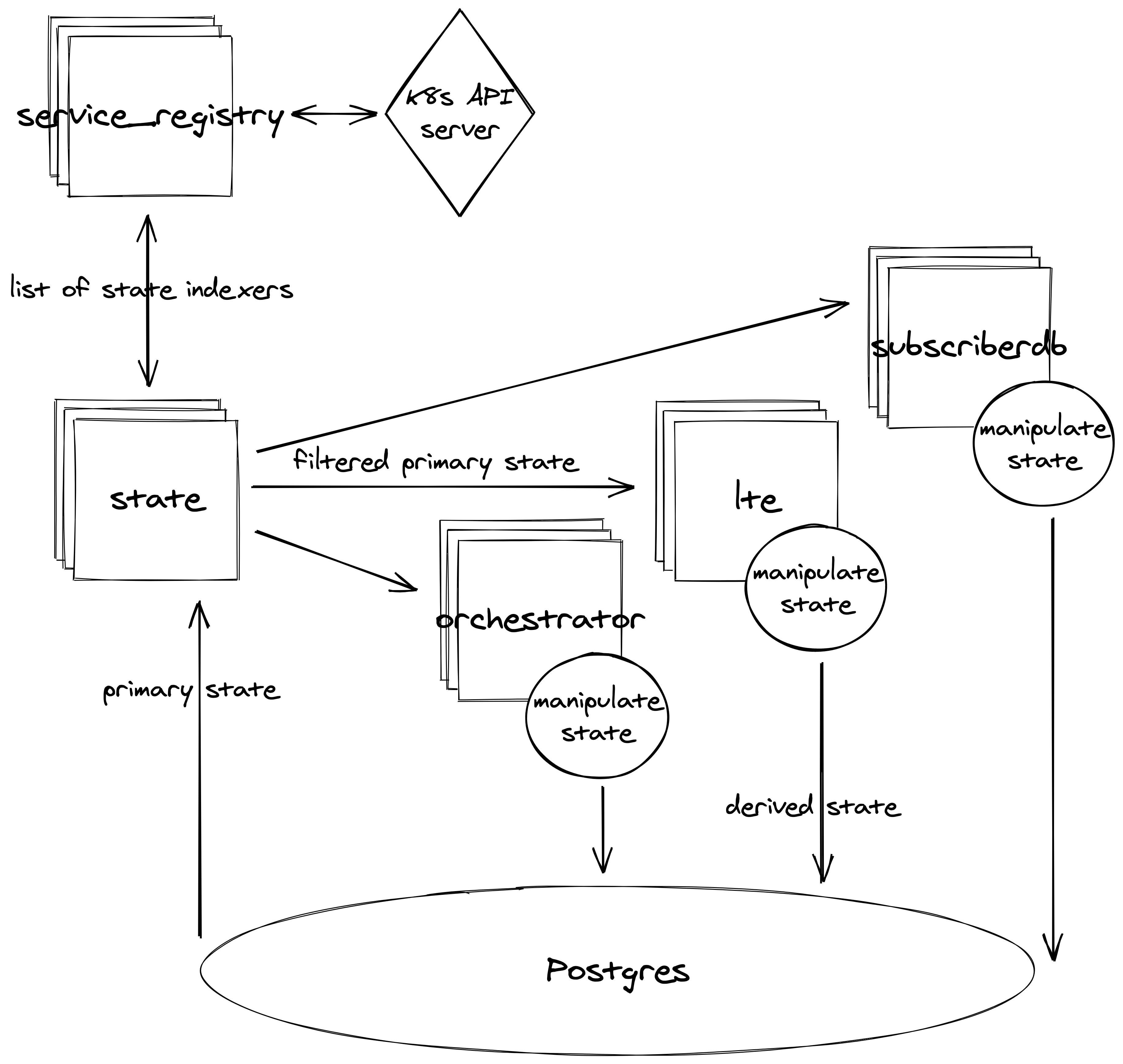Modularity
The Orchestrator follows a modular design, supporting domain-specific applications under an extendable service mesh architecture. This document describes the Orchestrator's service mesh architecture motivations, implementation, and how to extend Orchestrator for your own domain-specific purposes.
Motivation
The Magma platform aims to provide unified access network management, across domains. Operators should be able to use the same, familiar Orchestrator interface to provision and monitor deployments targeting use-cases from fixed wireless access, federated fixed wireless access, private LTE, carrier Wi-Fi, etc.
To achieve this goal, the Orchestrator provides a set of core, domain-agnostic features, which are then extended by domain-specific functionality on a per-deployment basis. This logic-based extension occurs completely at runtime -- that is, while we provide Helm charts targeting a default set of use-cases, extending an Orchestrator deployment is, practically, as simple as spinning up a new service within the cluster.
For more background on microservice patterns, and the extension pattern specifically, refer to the article on domain-oriented microservice architectures.
Implementation
Overview
Orchestrator provides a discrete set of extensions for injecting functionality into the core services. These extensions (i.e. hooks) implement a per-extension gRPC servicer, where core Orchestrator services will handle making calls over-the-network to the servicer at the appropriate time. Each service in the deployment can implement any of the extensions, and the core services will automatically handle calling the extension implementation. Discovery is handled by assigning Kubernetes labels and annotations.
There are two categories of extensions
- Producer extensions export data to core services upon request
- Consumer extensions receive data from core services
Supported extensions
We currently support 7 extensions
- Analytics collector
- Calculate, write, and return new metrics derived from existing metrics
- Producer, aggregated by the analytics service
- Label:
orc8r.io/analytics_collector
- Mconfig builder
- Define configuration (mconfigs) for gateway services
- Producer, aggregated by the configurator service
- Label:
orc8r.io/mconfig_builder
- Metrics exporter
- Export metrics to chosen data sink
- Consumer, pushed from the metricsd service
- Label:
orc8r.io/metrics_exporter
- Obsidian handler (REST API)
- Define REST API endpoints
- Producer/consumer, proxied by the obsidian service
- Label:
orc8r.io/obsidian_handlers - Annotations
orc8r.io/obsidian_handlers_path_prefixesdetermine which endpoints to proxy
- State indexer
- Receive reported state for processing and/or indexing under new primary key
- Consumer, pushed from the state service
- Label:
orc8r.io/state_indexer - Annotations
orc8r.io/state_indexer_versionreindex all state when indexer version is incrementedorc8r.io/state_indexer_typeswhich types of state to send to the indexer
- Stream provider
- Push arbitrary objects to gateway services subscribed to the stream
- Producer, aggregated by the streamer service
- Label:
orc8r.io/stream_provider - Annotations
orc8r.io/stream_provider_streamswhich streams the provider exposes
- Swagger specifier
- Define the accompanying REST API endpoints by exposing a Swagger (OpenAPI) specification
- Producer, aggregated by the obsidian service
- Label:
orc8r.io/swagger_spec
Example extension
The interface between core service and extension implementation is defined per extension. Beyond that interface, functionality depends on the particular extension. For a concrete example, consider the state indexing codepath

Extending Orchestrator
Implement extension
You'll need to define a service executable which implements the gRPC servicer definition for one of the above extensions. Then, when packaging your Helm charts, be sure to include the relevant labels and annotations for your new service. After deploying the Helm charts to your K8s cluster, the core services should automatically discover and incorporate the new extension implementation.
Add new extension
Reach out to us! Follow the "Community" tab in the header to get connected. For compelling use-cases, we can add and/or guide the addition of new extensions.
